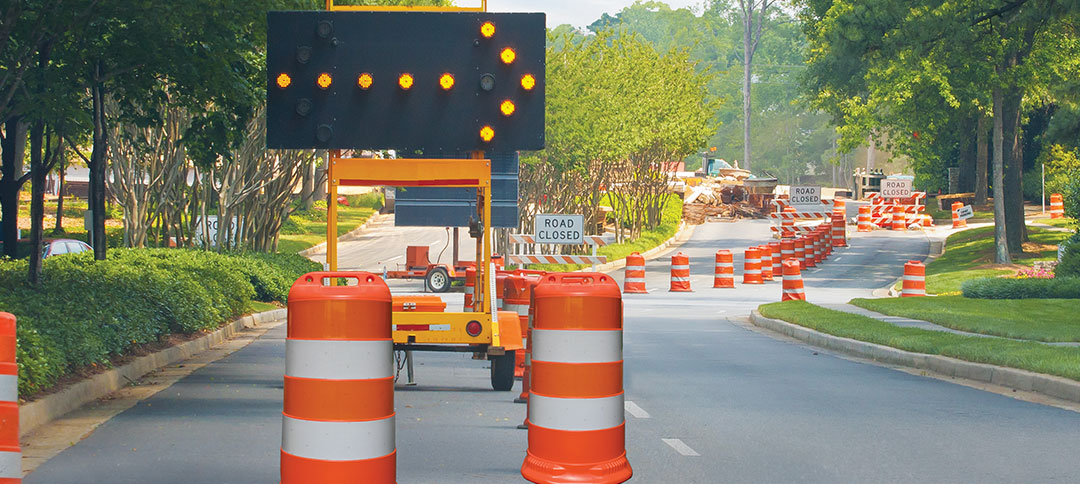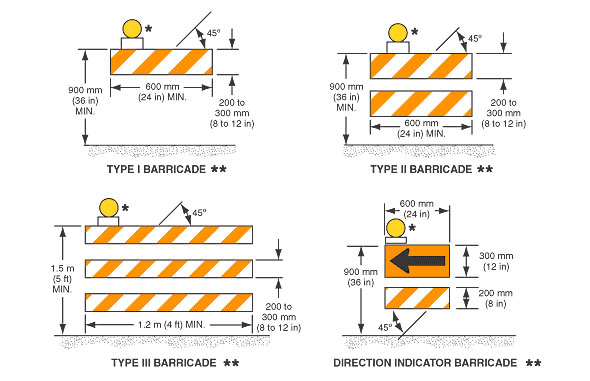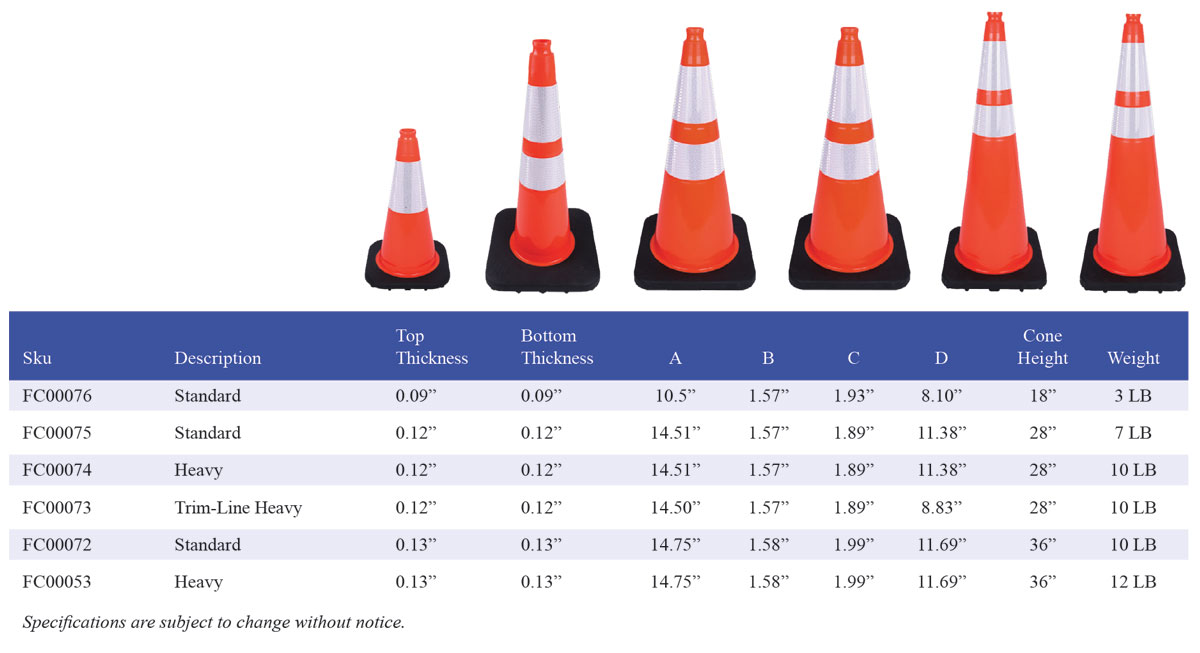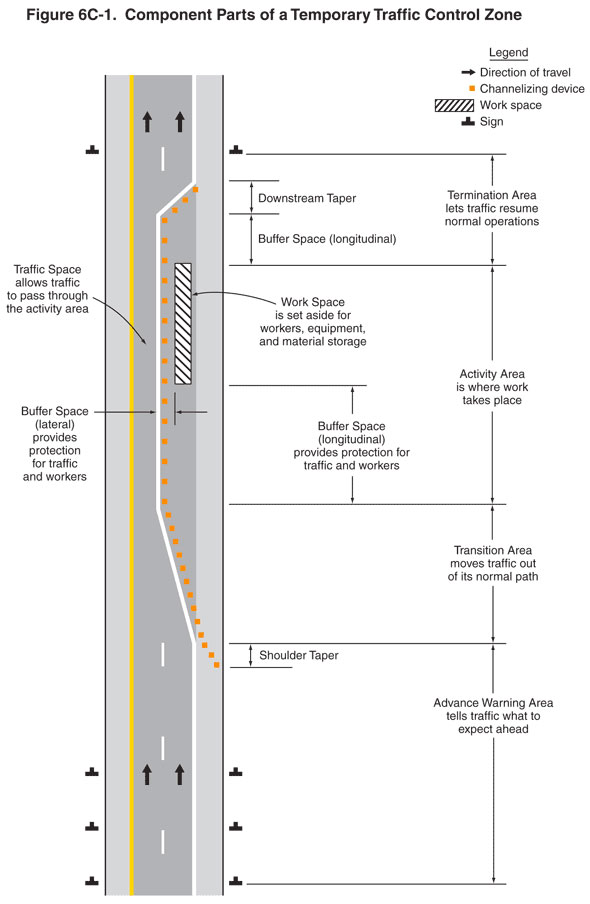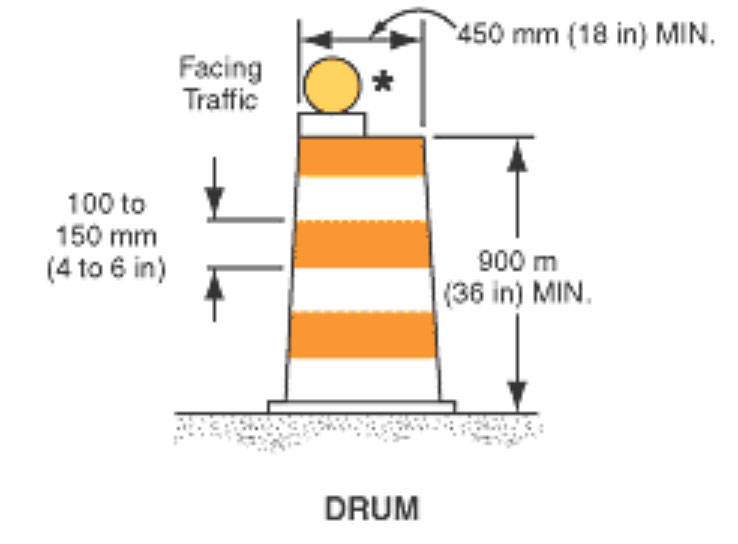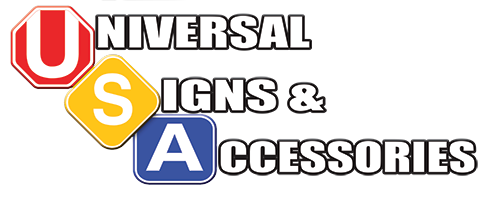“Orange cones ahead. Looks like I’m going to have to change lanes.” That sums up the extent of the interaction between a motorist and a traffic cone. As it should be, as long as they’re obeying. It’s the work crews implementing those safety measures that need to understand there are MUTCD Regulations on traffic control barricades, cones and drums – regulations put in place because they’re proven to be effective and provide safety.
MUTCD: The Manual on Uniform Traffic Control Devices (MUTCD) for Streets and Highways is a document issued by the Federal Highway Administration to specify the standards by which traffic signs and signals are to be designed, installed, and used. Go to MUTCD.
1. Barricades
2. Cones
3. Drums
Traffic Control Barricades Regulations
Per Chapter 3F of the MUTCD, barricades are used to warn road users of conditions created by work activities in or near the road and to guide traffic. Barricades communicate:
- Road closings/roadway ends
- Ramp or lane closure
- Restricted areas and delineate changes in road lanes.
Barricades must be able to stand on their own, have a minimum rail length of 24,” and include at least one rail with alternating orange and white retro-reflective tape. There are 3 types of barricades. The number of reflective rails on the barricade determine what type it is.
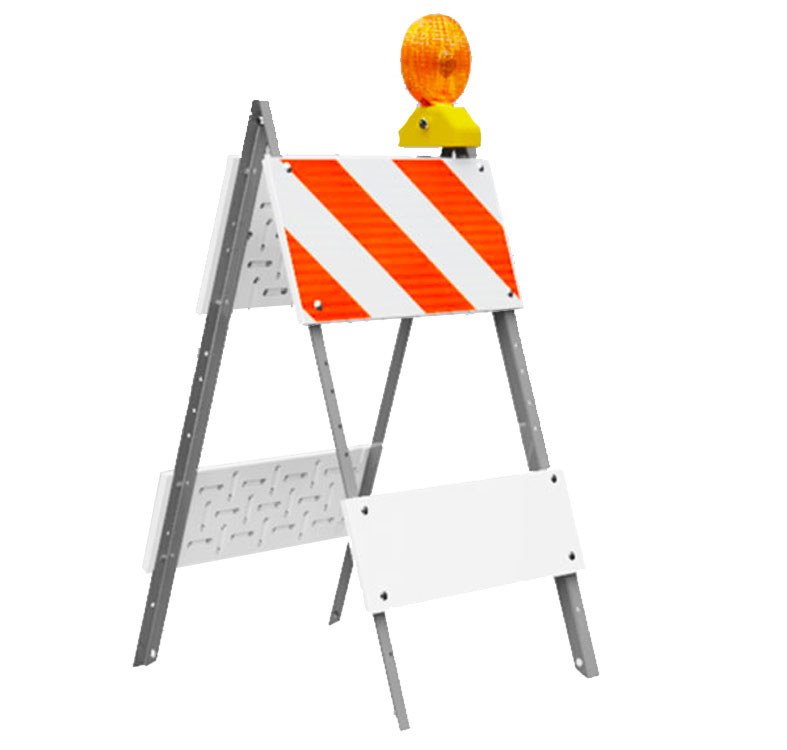
Type I Barricade
Type I Barricade – used for conventional roads and urban streets. Type I barricade has one 8 to 12 inch tall rail face on each side.
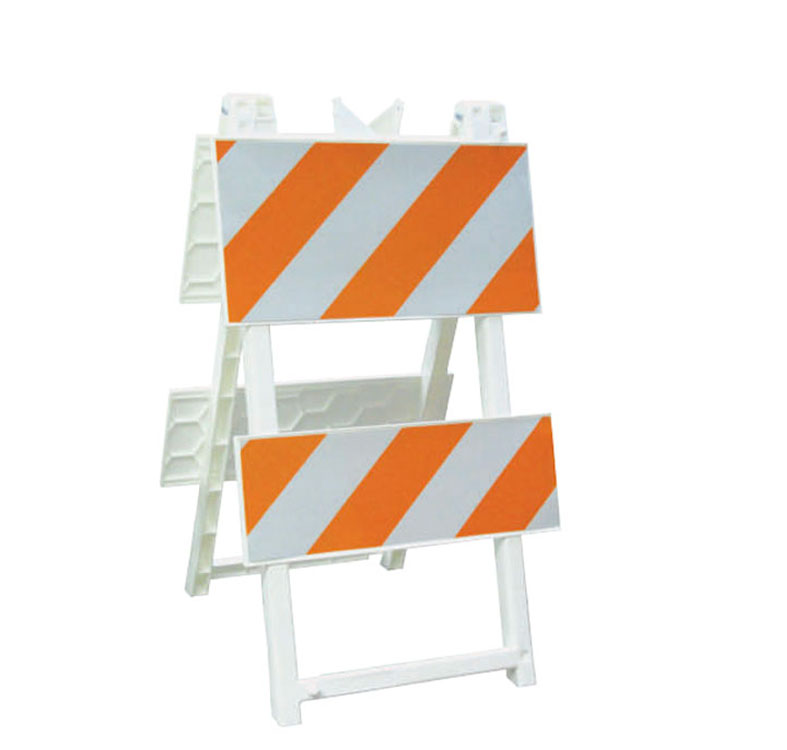
Type II Barricade
Type II Barricade – intended for freeways and higher speed roads where traffic is maintained through the work zone. These have two retroreflective railings on each side.
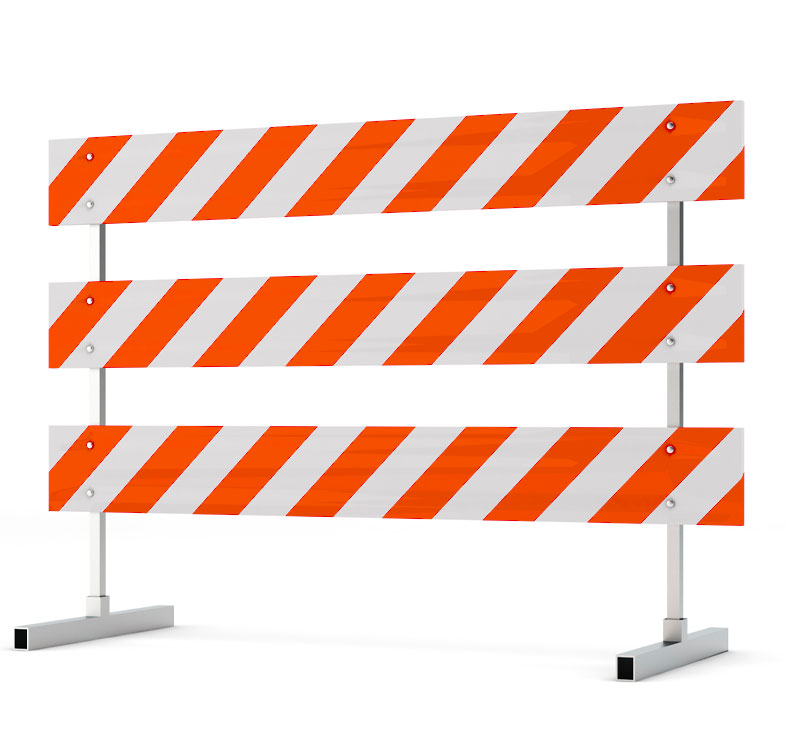
Type III Barricade
Type III Barricade – used for complete road closures. These have three retroreflective railings on each side.
There is a Type IV barricade that is used as a “Direction Indicator Barricade.”
Retroreflective Stripes. In type I and type II barricades, the stripes on the panel point in the intended path around them. And the rail stripe needs to be 6 inches wide. If rails are less than 36 inches long you can use 4 inch wide stripes.
Barricade Lights. Barricade warning lights are optional. Check out our barricade lights.
Signs may be installed on barricades. Click here for more information.
Traffic Control Cones Regulations
Traffic cones are used to
- Channelize traffic
- Divide opposing vehicular traffic lanes
- Divide lanes when two or more lanes are kept open in the same direction
- Delineate utility work (short-term maintenance).
Cones are orange and shall be made of a material that can be struck without causing damage to the impacting vehicle.
For daytime and low-speed roadways the minimum height is 18 inches.
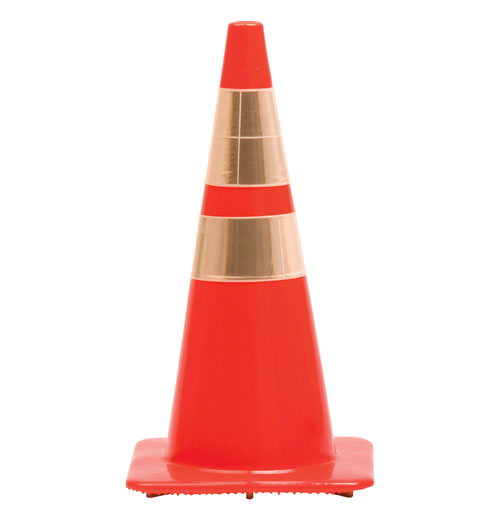
For freeways and other high-speed highways or at night on all highways, the minimum cone height is 28 inches. And these need to be “retroreflectorized” or equipped with lighting devices for maximum visibility.
Retroreflectorization
Cones 28 to 36 inches in height: Retroreflectorization shall be provided by a 6 inch wide white band located 3 to 4 inches from the top of the cone and an additional 4 inch wide white band located approximately 2 inches below the 6 inch band.
Cones more than 36 inches high: Retroreflectorization shall be provided by horizontal, circumferential, alternating orange and white retroreflective stripes that are 4 to 6 inches wide. Each cone shall have a minimum of two orange and two white stripes with the top stripe being orange. Any nonretroreflective spaces between the orange and white stripes shall not exceed 3 inches in width.
Spacing for traffic cones and channelizing devices
Become an expert in setting up traffic control to make work zones safer.
The spacing of traffic cones and channelizing devices should not exceed a distance in feet equal to 1.0 times the speed limit in mph) when used for taper channelization.
For more information on tapering traffic cones in transition and termination areas, click here for MUTCD regulations on Tapers.
Traffic Control Drums Regulations
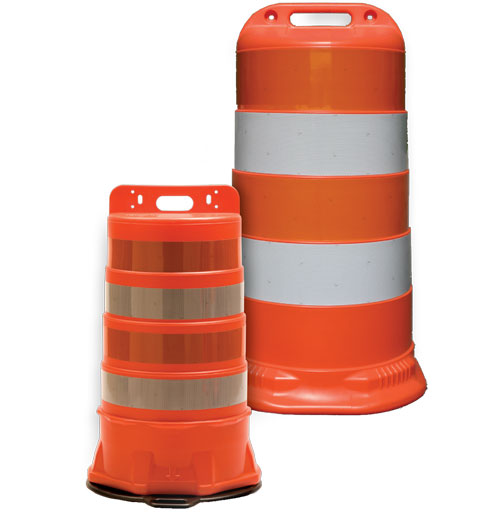
Traffic drums are used to
- Channelize or delineate road user flow
- They may also be used alone or in groups to mark specific locations
Drums are used to provide a smooth, gradual traffic flow through work zone areas.
“They shall be a minimum of 36 inches height and have at least a 18 inch minimum width. The markings on drums shall be horizontal, circumferential, alternating orange and white retroreflective stripes 4 to 6 inches wide. Each drum shall have a minimum of two orange and two white stripes with the top stripe being orange. Any nonretroreflectorized spaces between the horizontal orange and white stripes shall not exceed 3 inches wide. Drums shall have closed tops that will not allow collection of construction debris or other debris.”
Metal drums can not be used.
Do not weigh down traffic drums with sand, water or any other material, as that would make them hazardous to road users and workers when struck.
Moving Pedestrian Flow
Per the MUTCD, “Drums should not be used for pedestrian channelization or as pedestrian barriers in TTC zones on or along sidewalks unless they are continuous between individual devices and detectable to users of long canes.”
The same rule applies to traffic cones.
Regarding channelizing devices for pedestrians, keep in mind that using tape, or rope, to connect individual devices are not detectable by persons with visual disabilities and are incapable of providing detectable path guidance on temporary or realigned sidewalks or other pedestrian facilities.
The MUTCD has a few good paragraphs on guidance for this scenario: Click here to read it.
This brief outine on barricades, cones and drums will get you started into the world of traffic control. The complete source is the MUTCD. You should also consult with the DOT of your specific state and local zoning authorities of your city our county, as they may have additional requirements when it comes to communicating work zones to road users.

